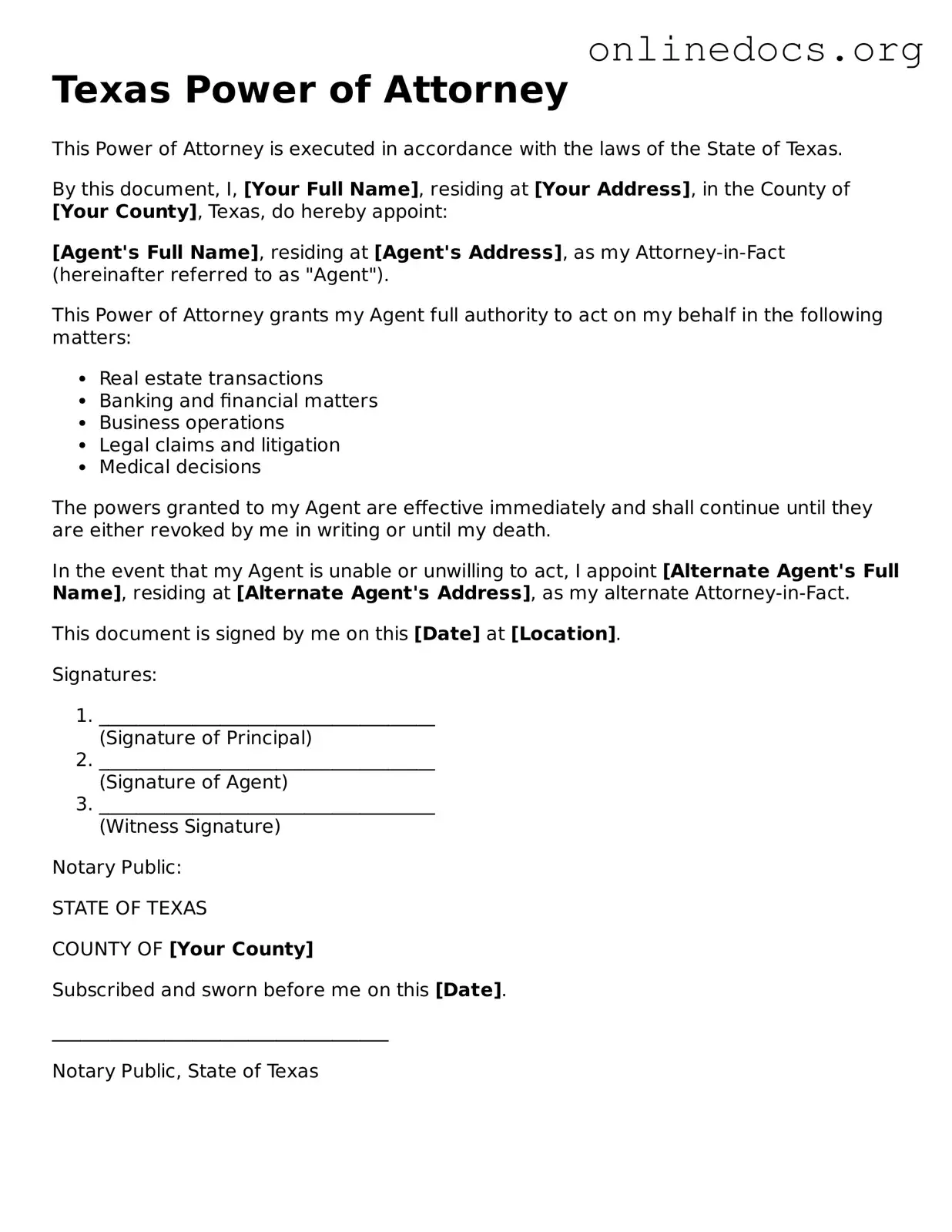The Texas Medical Power of Attorney is similar to the general Power of Attorney but focuses specifically on healthcare decisions. This document allows an individual to appoint someone to make medical choices on their behalf if they become incapacitated. It ensures that medical preferences are respected and provides clarity on the individual's wishes regarding treatment and care. Like the general Power of Attorney, it requires the principal to be of sound mind when executed and must be signed in accordance with state laws.
The Durable Power of Attorney is another document closely related to the Texas Power of Attorney. It remains effective even if the principal becomes incapacitated. This feature distinguishes it from a standard Power of Attorney, which typically becomes void under such circumstances. The Durable Power of Attorney can cover financial matters, allowing the appointed agent to manage the principal's assets and make decisions about their finances, ensuring continuity in management during challenging times.
The Financial Power of Attorney serves a similar purpose to the general Power of Attorney but is specifically tailored for financial matters. This document allows an individual to designate someone to handle their financial affairs, such as paying bills, managing investments, or filing taxes. It provides a clear framework for financial management and can be limited to specific tasks or broad in scope, depending on the principal's needs. This specificity helps prevent confusion about the agent's authority.
The Living Will, while different in function, shares similarities with the Power of Attorney in terms of decision-making authority. A Living Will outlines an individual's preferences for medical treatment in situations where they cannot communicate their wishes. It is often used in conjunction with a Medical Power of Attorney. Both documents aim to ensure that a person's values and desires are honored, especially in critical health situations, providing peace of mind for both the individual and their loved ones.
Understanding the various forms involved in managing personal and financial decisions is crucial. Additionally, when seeking endorsements for professional or academic opportunities, utilizing a structured document can significantly streamline the process. A practical tool for this purpose is the Recommendation Letter form, which helps ensure that referees provide all necessary information, enhancing the quality of recommendations received.
The Guardianship document also has parallels with the Power of Attorney, as both involve appointing someone to act on behalf of another person. However, Guardianship is typically established through a court process and is used when an individual is unable to care for themselves due to incapacity. While a Power of Attorney is a voluntary arrangement, Guardianship is often seen as a more formal and restrictive measure. Both aim to protect the interests of individuals who cannot make decisions for themselves, but they operate under different legal frameworks.
